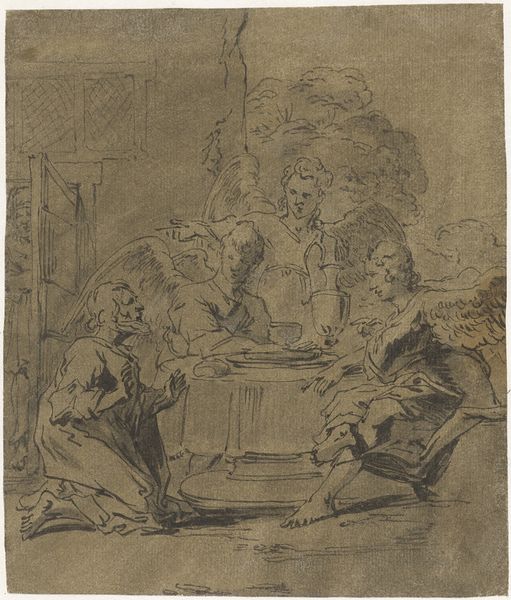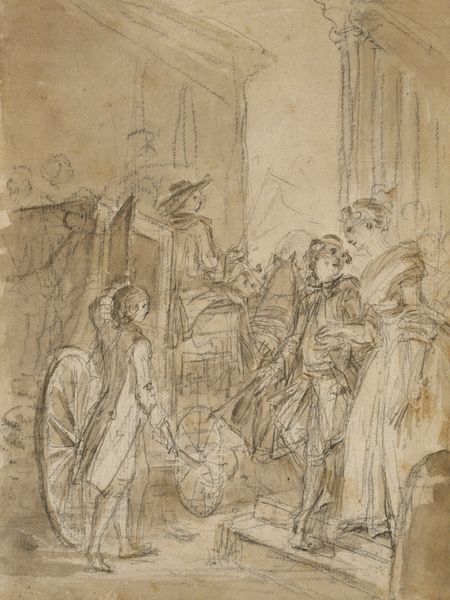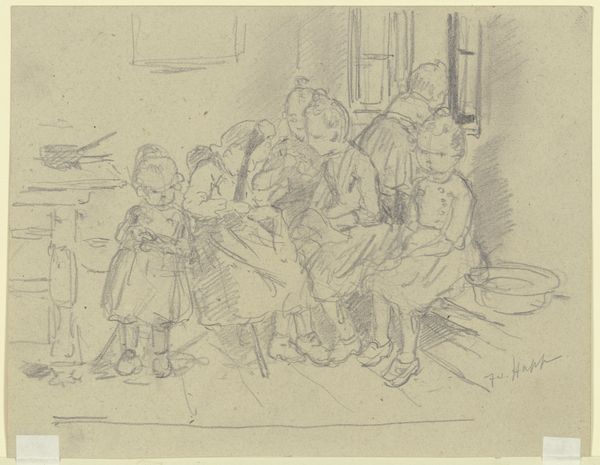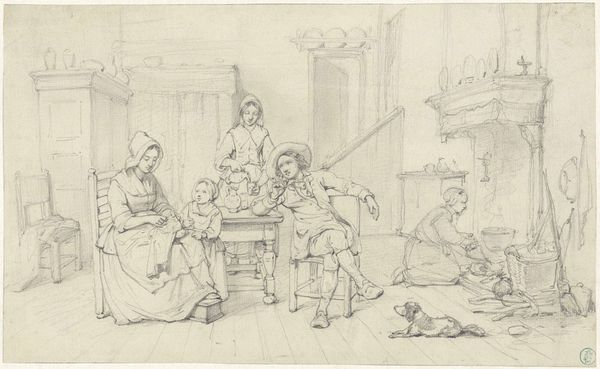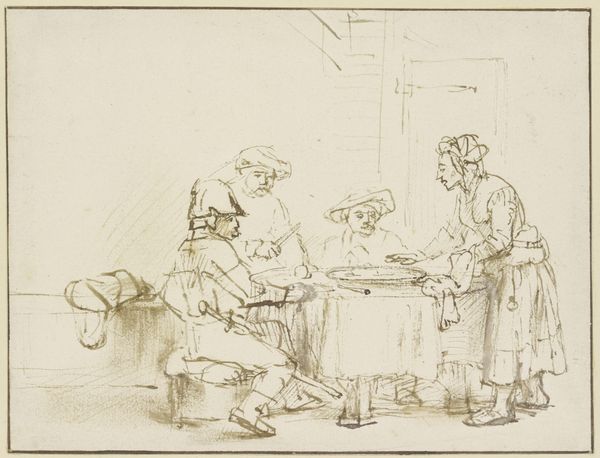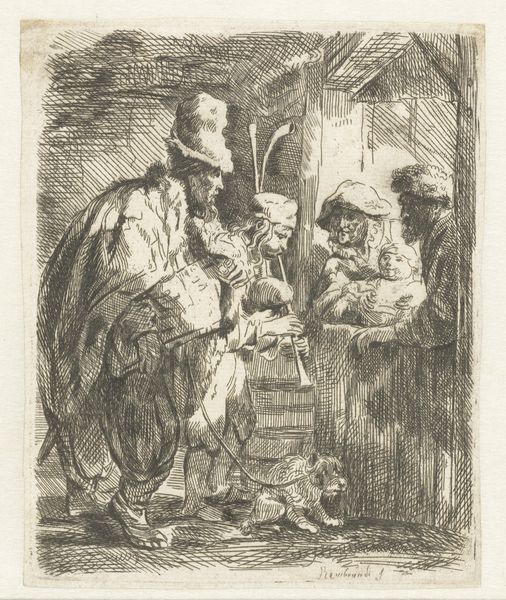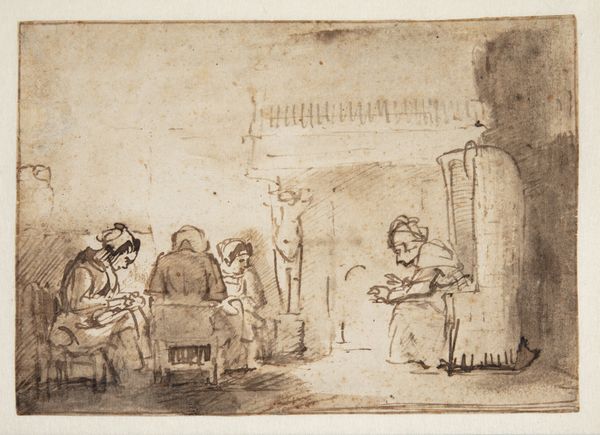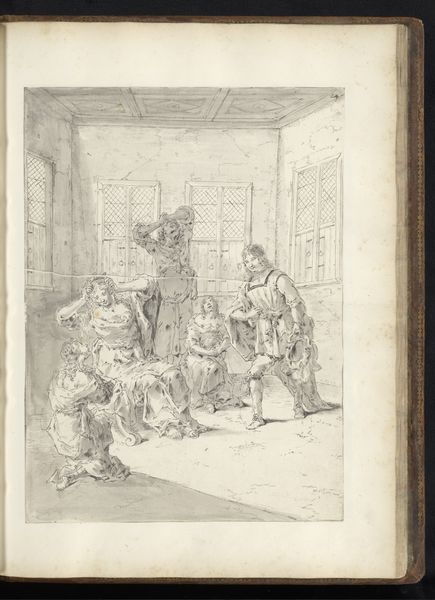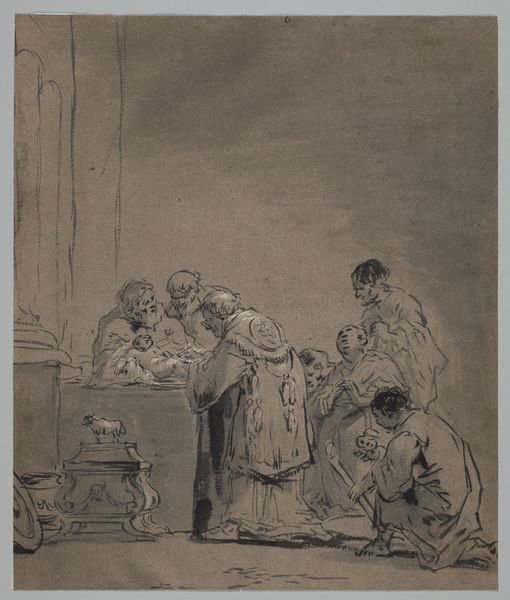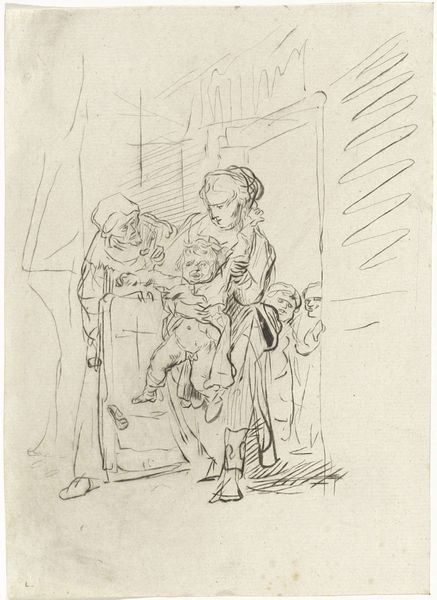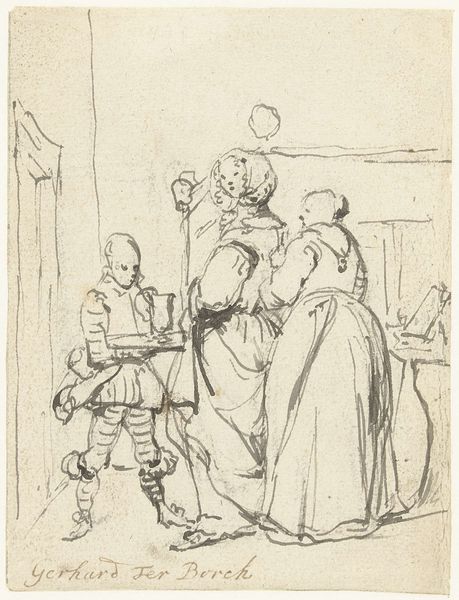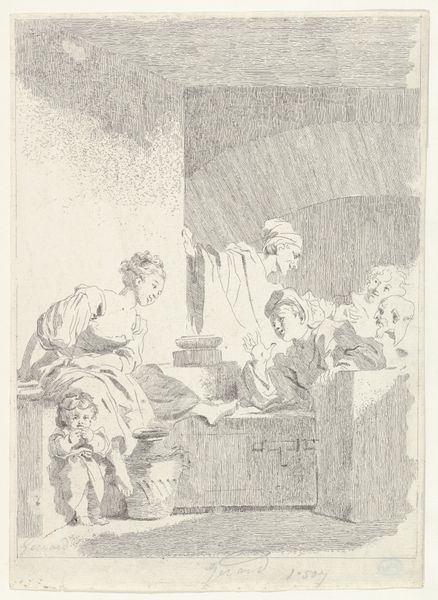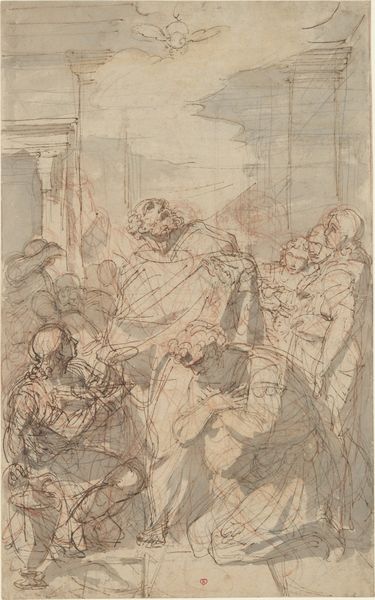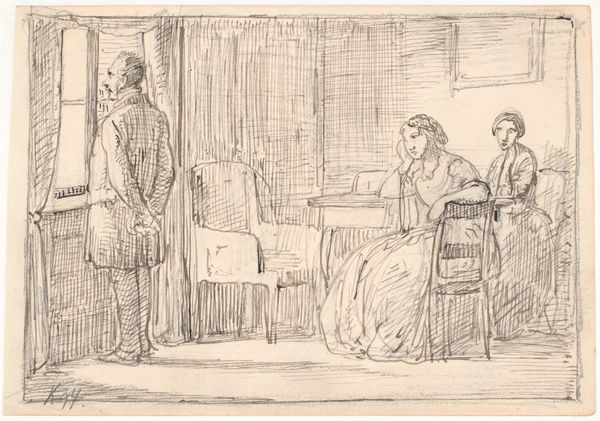
drawing, ink, graphite
#
portrait
#
drawing
#
figuration
#
ink
#
graphite
#
genre-painting
#
academic-art
Copyright: Public Domain
Curator: Look at this fascinating genre scene: Georg Melchior Kraus's "The Funny Brothers," a drawing dating back to around 1768, currently housed in the Städel Museum. Editor: It strikes me as informal, almost sketch-like, with a softness in the graphite that makes the figures seem caught in a fleeting moment. There's something almost playful about the grouping. Curator: Absolutely, and let's consider the materials. It is crafted with ink and graphite. Kraus has really showcased his draftsmanship; observe how he uses subtle gradations to define forms and space. This was made during a period where academic art valued that mastery of line. Editor: Thinking about that period, what sort of workshops would've developed this skill? How much time did he have, and was the goal preliminary study or a completed work? Curator: Kraus occupied a crucial role in Weimar classicism. Considering institutions, he later co-founded the Weimar Princely Free Drawing School. Now think about what kind of impact the school had in relation to how this type of artistic expression of figuration or portraits was viewed. Editor: Precisely. Looking at the image, I notice that they all have cups. Do we have evidence suggesting a specific product or establishment in mind, perhaps playing with societal perceptions or caricatures of everyday life? I mean, is he trying to communicate a moral message through the type of materials in this work? Curator: We need to study who was allowed to make drawings. At the time Kraus was working, the rising middle class enjoyed increased patronage in the arts, even something as mundane as an enjoyment for drawing; that is a shift, right? And they began consuming and shaping cultural preferences as art began expressing social ideas and movements that might be a new framework of reference. Editor: Right! His drawings give the cultural and institutional background on why Kraus drew and made an educational impact in this time. It truly showcases the socio-political environment from where he hails! Curator: By emphasizing the tools and materials that were available to artists like Kraus, and the social dynamics in society, the art world becomes richer, does it not? Editor: Exactly, these new findings really show the importance and political dynamic in historical interpretation of materials!
Comments
No comments
Be the first to comment and join the conversation on the ultimate creative platform.
